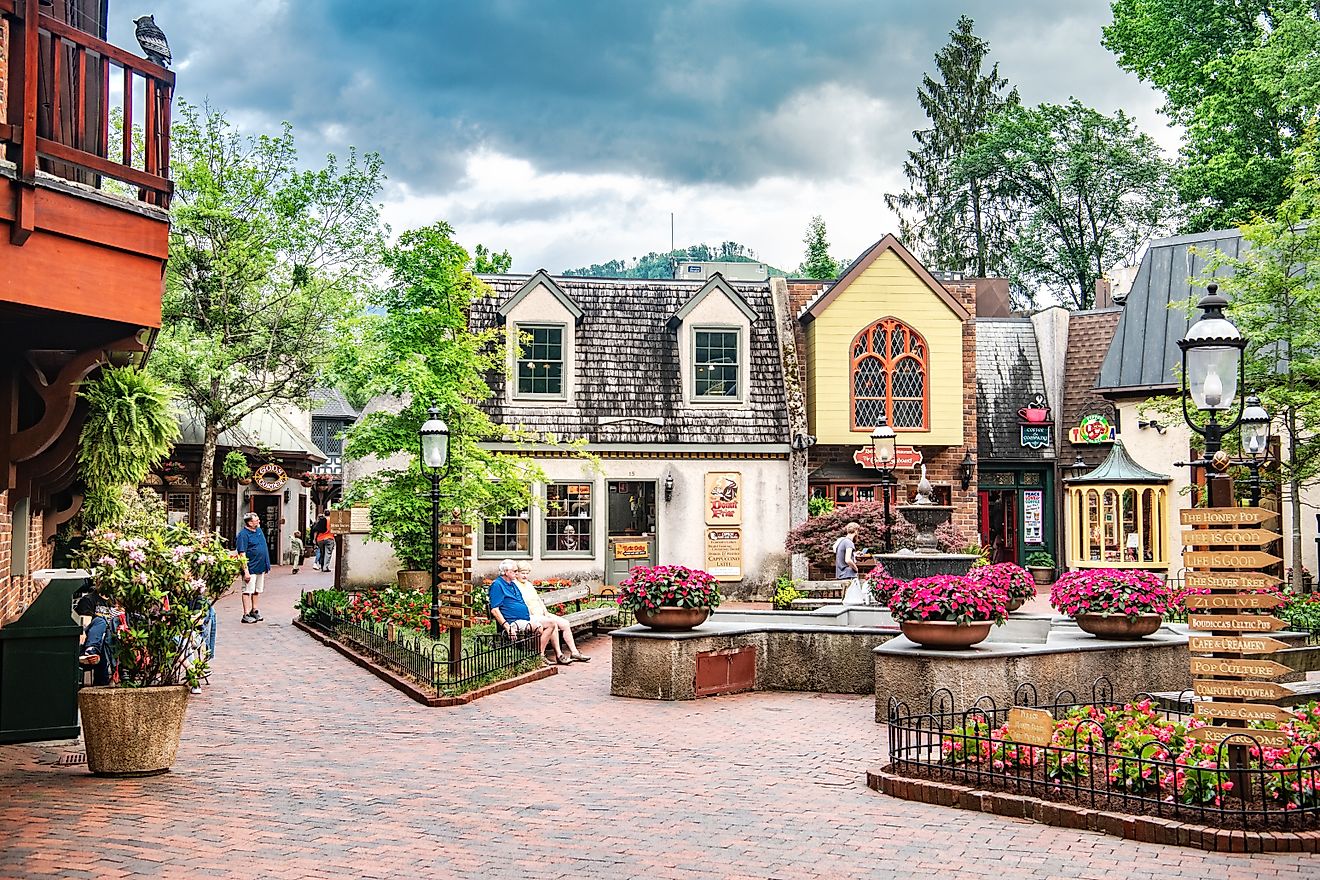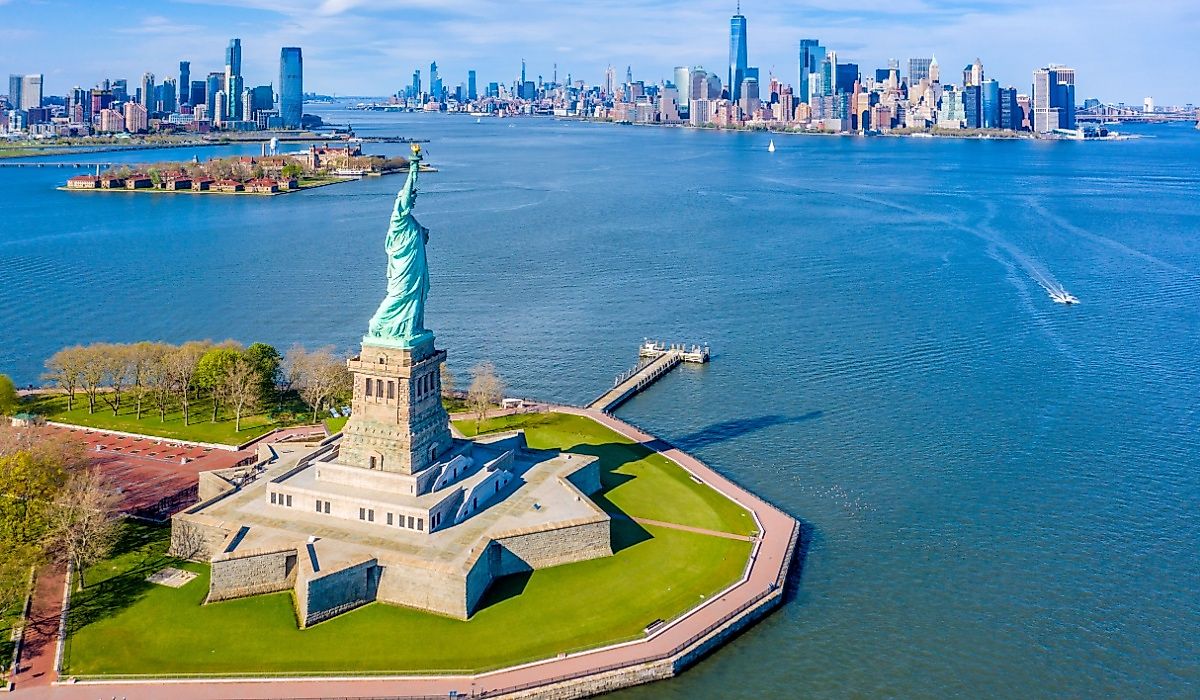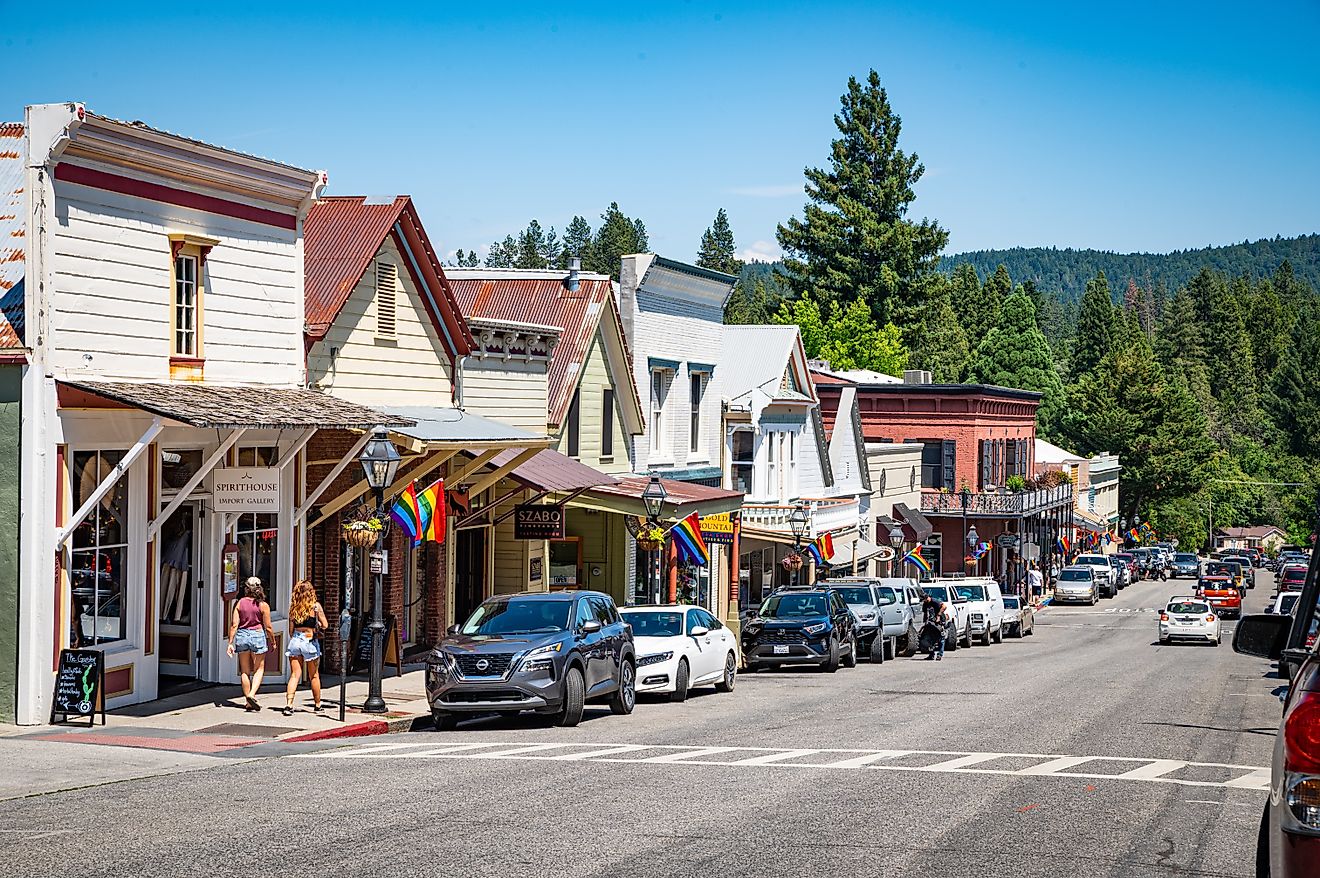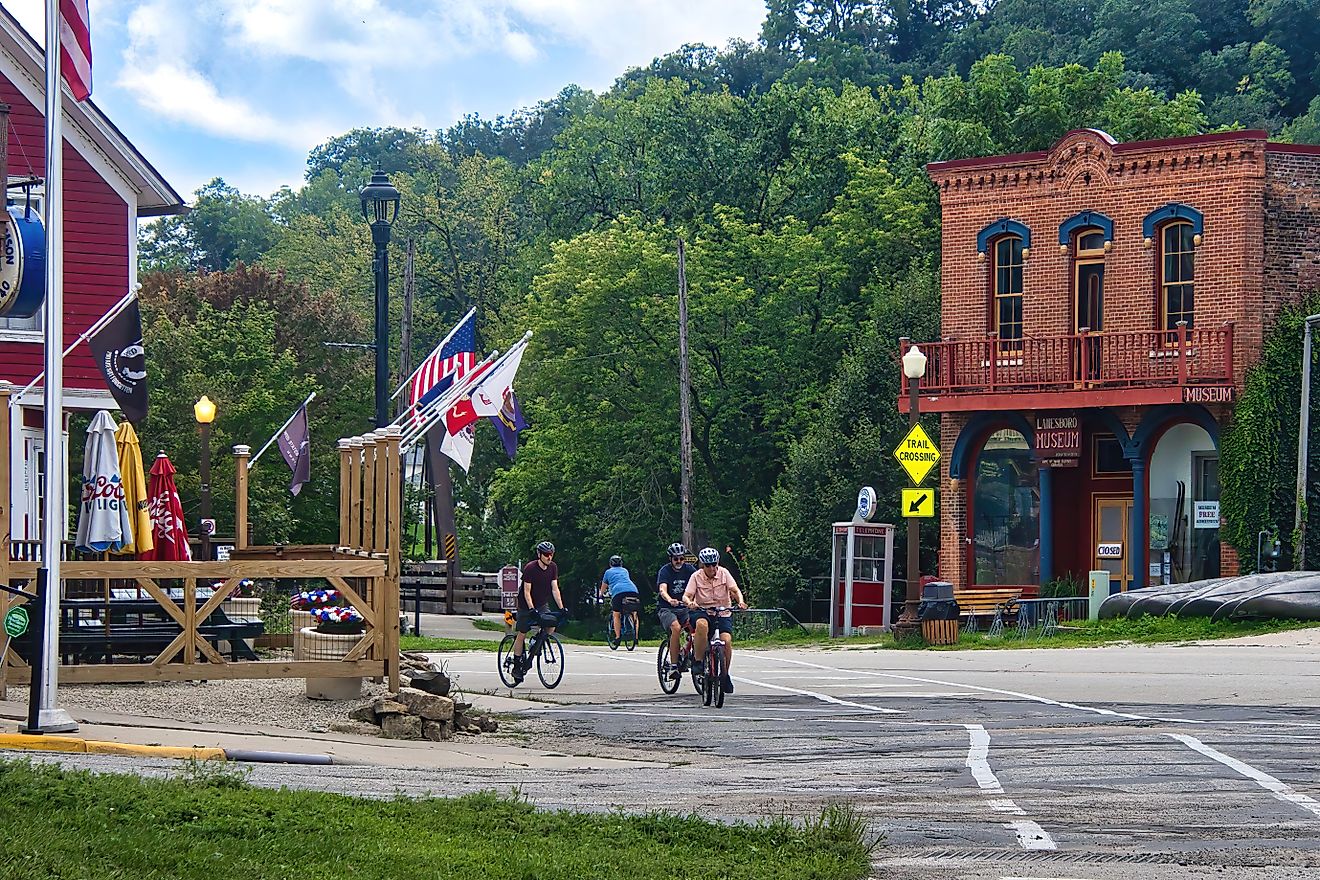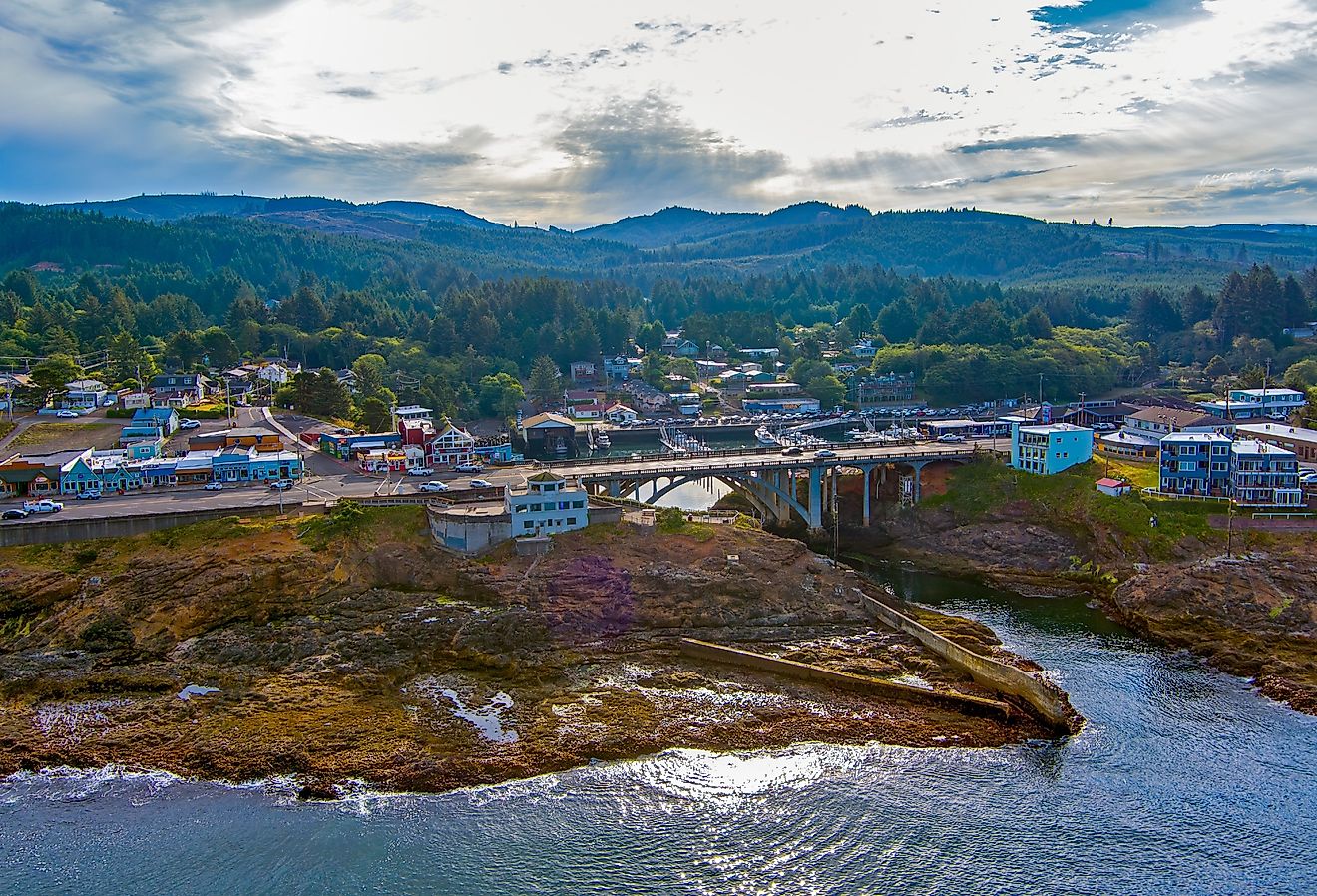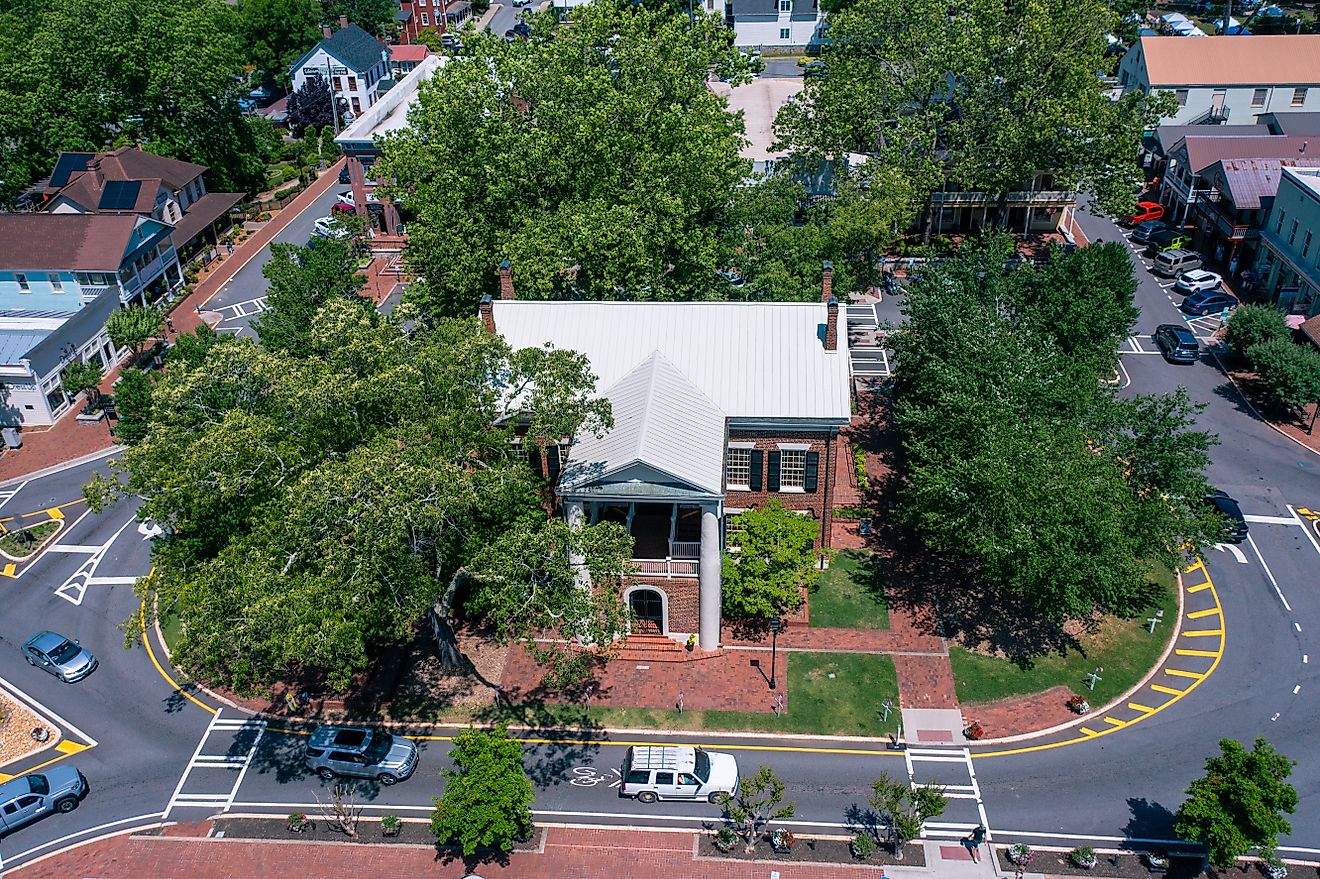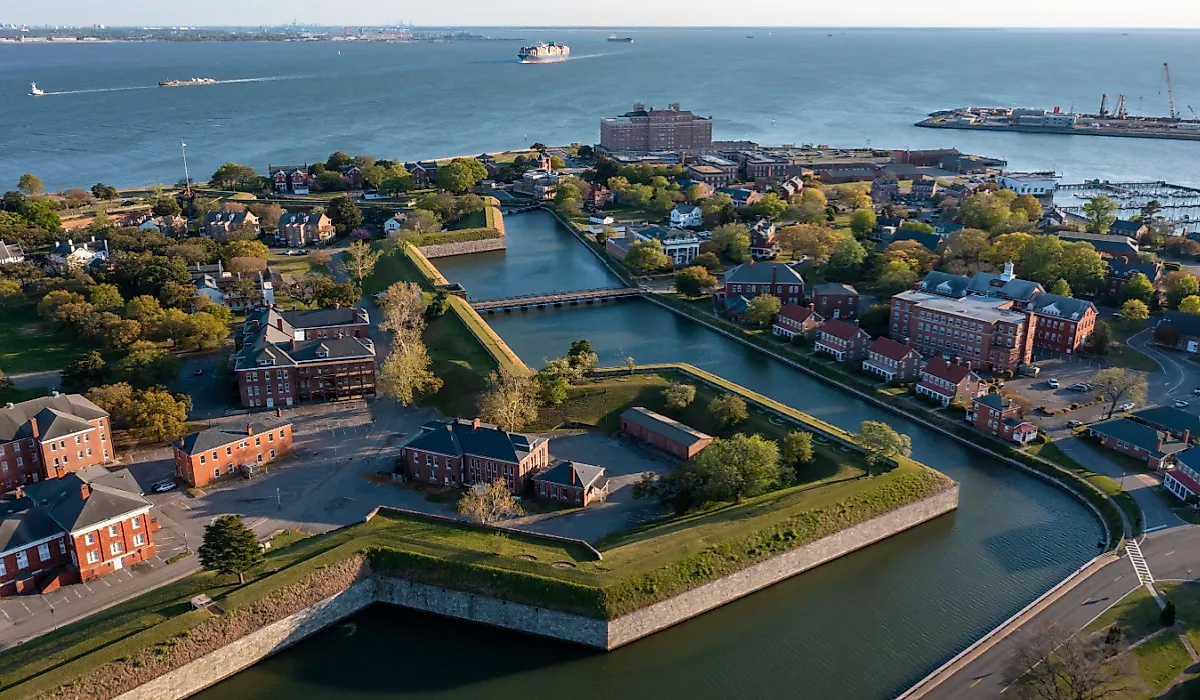
8 Must-See Historic Forts In Virginia
As one of the oldest states in the country, Virginia’s long history is tightly entwined with some of America's earliest military operations. Much of this past is preserved through a network of forts that span centuries of conflict, from the colonial frontier to the Civil War. These sites, many now open to the public, reveal how evolving defense strategies shaped Virginia's very identity.
Each of the forts we will be discussing here reflects a distinct purpose, whether guarding river routes, protecting the capital, or training troops for global wars. Exploring them provides a direct encounter with the clever engineering, leadership, and decisions that defined the state's role in American history and the enduring importance of its strategic position on the Atlantic coast.
Fort Monroe
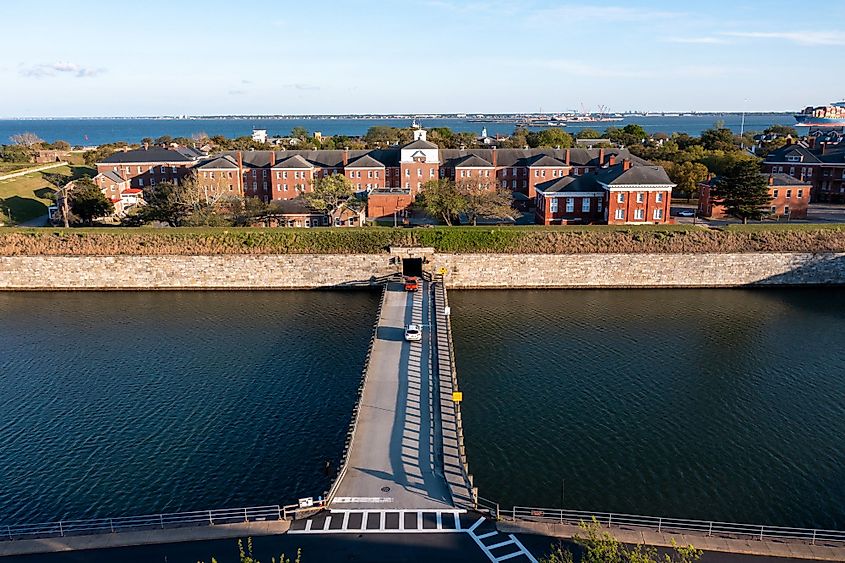
Fort Monroe, known as the "Gibraltar of the Chesapeake," stands as one of the cornerstones of Virginia's storied military history. Constructed between 1819 and 1834, this massive stone fortress guarded the entrance to Hampton Roads, a critical waterway during the Civil War. Its strategic importance is matched by its historical significance, as it served as a Union stronghold in Confederate territory and became a refuge for enslaved people seeking freedom, also earning the nickname "Freedom’s Fortress."
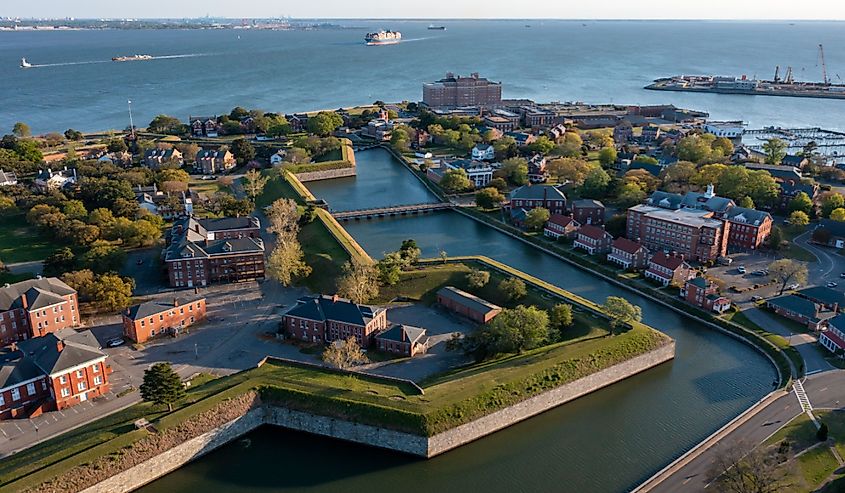
The fort’s imposing walls, moat, and well-preserved casemates offer a detailed look into 19th-century military architecture. These days, you can check out the Casemate Museum for yourself, a place that details Fort Monroe’s overarching role in American war history, including its connection to figures like Robert E. Lee and Abraham Lincoln.
Designated a National Monument in 2011, Fort Monroe is a top-tier historic attraction with scenic waterfront views complementing the site, making it an engaging destination for understanding Virginia’s wartime past.
James Fort
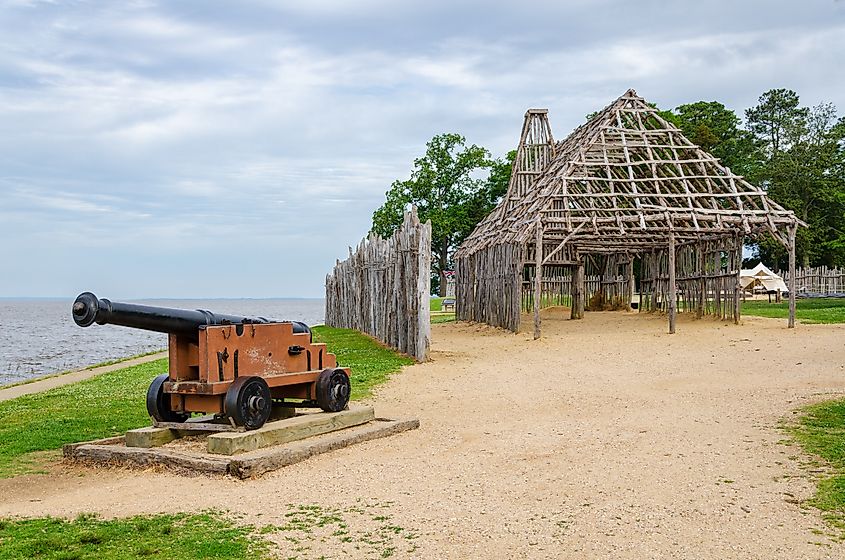
The James Fort, part of the historic Jamestown Settlement, marks the site of America’s first permanent English colony, established in 1607. This triangular wooden fort, reconstructed based on archaeological evidence, offers a tangible, modern-day connection to Virginia’s longstanding colonial origins
Enclosed by palisade walls, the fort contains replicas of early 17th-century structures, including a church, storehouse, and various homes, reflecting the settlers’ struggle for survival in the New World. Its location along the James River also underscores its raw strategic role in early trade and defense against Spanish and Native American threats.
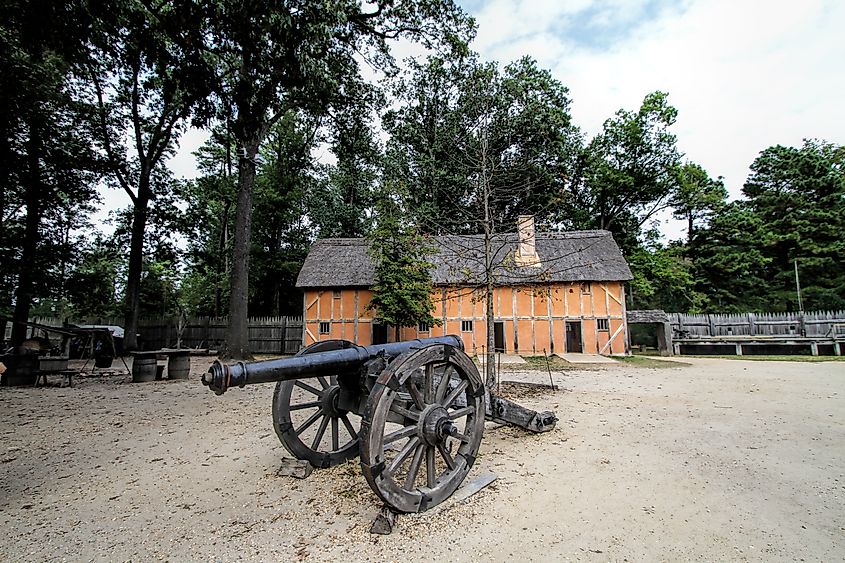
With a visit, you'll be able to engage with costumed interpreters demonstrating anything from blacksmithing and cooking to musket firing, bringing the colonial experience to life in front of your eyes. Furthermore, the fort’s adjacent museum and archaeological site, called Historic Jamestowne, hosts cool artifacts like armor, tools, and documents, shedding even more light on the life of the English settlers and their challenges/interactions with the native Powhatan people.
Fort Ward
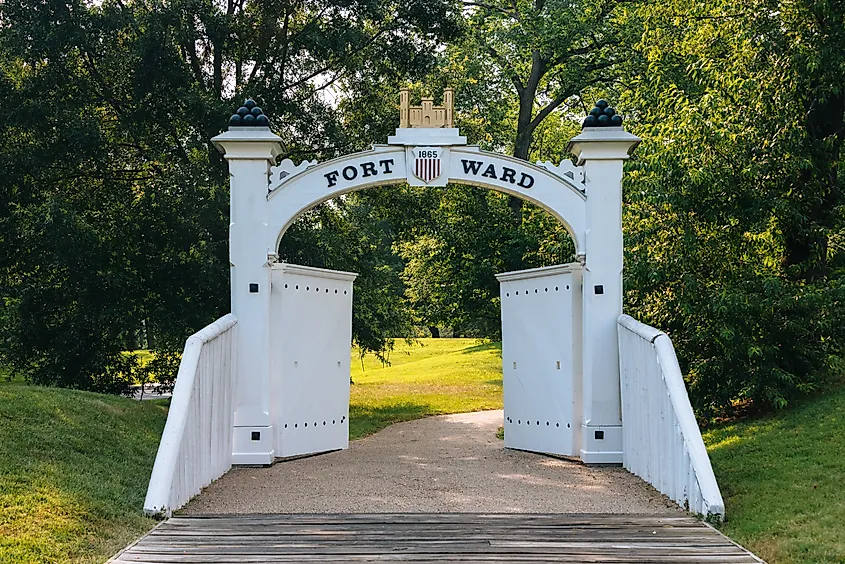
Fort Ward, a very well-preserved Union fortification from the Civil War located in Alexandria, exemplifies the defensive network that once protected the capital, Washington, D.C. Built in 1861 and expanded through 1865, this earthwork fort featured ramparts, bombproofs, and rifle pits designed to withstand artillery assaults.
As part of the Defenses of Washington, a group of major fortifications around the capital, it housed up to 1,200 soldiers and mounted 36 guns, though it never saw direct combat. Regardless, the fort's ideal location on a hilltop provided commanding views of the surrounding area.
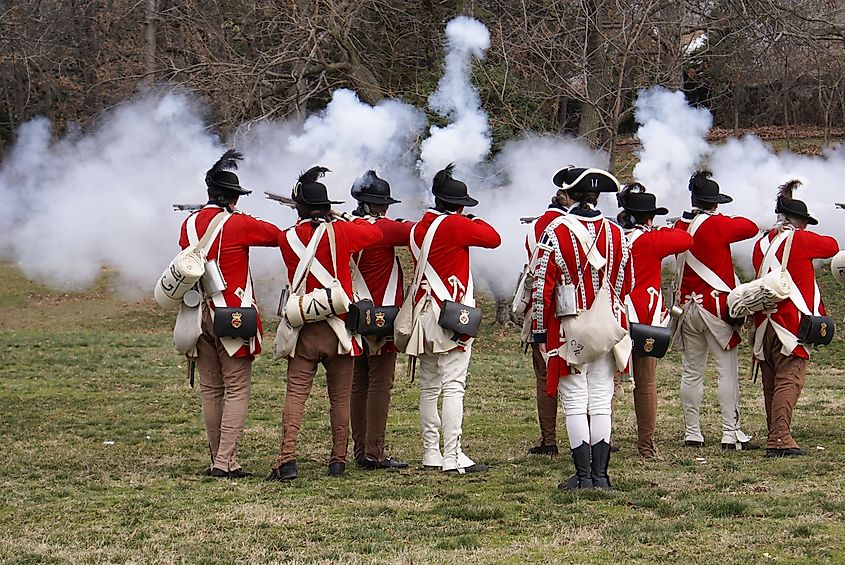
Today, the Fort Ward Museum and Historic Site offers reconstructed barracks, officers' quarters, and original earthworks, along with a number of exhibits on Civil War life, weaponry, and Alexandria's ultimate role in the Union effort. Be sure to stroll the perimeter trail, explore gun emplacements, and attend living history programs for a full experience.
Listed on the National Register of Historic Places and Virginia Landmarks Register, Fort Ward is among America's best Civil War monuments and a must-visit for all history buffs nearby.
Yorktown Battlefield
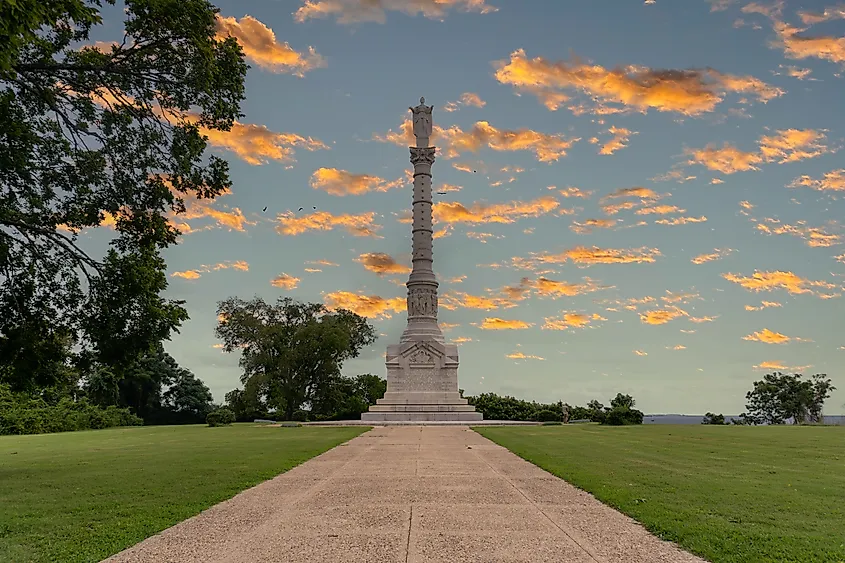
The Yorktown Battlefield, an area encompassing the siege lines and earthworks that contributed to the ultimate victory of the United States during the Revolutionary War, is clearly an important site when it comes to the fight for American independence. As part of the larger Colonial National Historical Park, this over 4,160-acre site preserves the fields where General George Washington's Continental Army, allied with French forces, compelled British surrender under Lord Cornwallis in 1781.
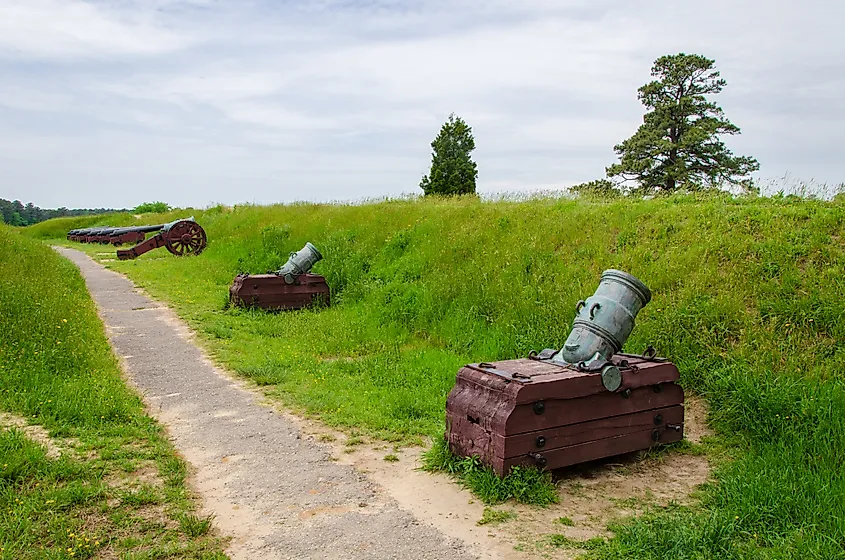
Located at the York River's mouth, it is a fascinating destination, highlighting 18th-century siege warfare with reconstructed redoubts and interpretive trails guiding you through key events. Explore the Grand French Overture, artillery positions, and the Moore House, too, the site of Cornwallis' surrender negotiations. Furthermore, the on-site museum and visitor center features various exhibits on the campaign, including maps, artifacts, and multimedia presentations.
Open year-round with free entry to the grounds, Yorktown Battlefield will teach you a lot about the Revolution's climax and Virginia's pivotal role in forging the nation. If you have the time, try also catching a ranger-led tour or a living history demonstration, two activities that really bring the battle to life.
Fort Norfolk
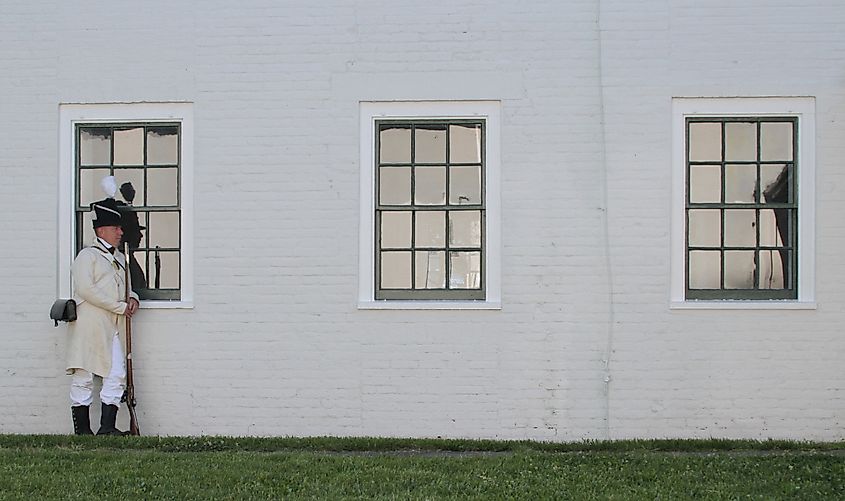
Fort Norfolk is the last surviving harbor-front fort from the early U.S. coastal defense system authorized by George Washington in 1794. Positioned along the Elizabeth River, it was built to protect Norfolk’s harbor and shipyards from naval attack. The fort mainly saw use during the War of 1812, when it defended against British incursions, and it later served as a Confederate ordnance depot during the Civil War.
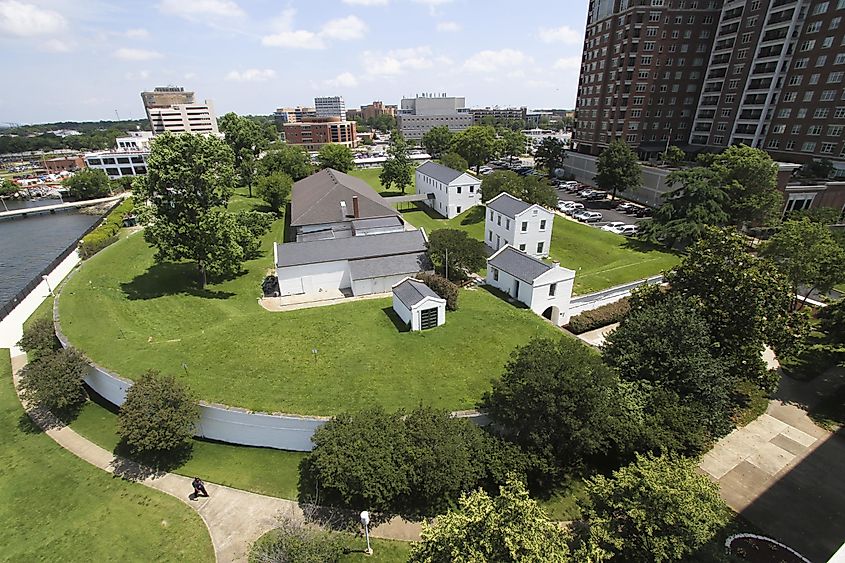
Today, it is managed by the U.S. Army Corps of Engineers and open to the public through guided tours and seasonal events. You can also explore on your own through its original brick ramparts, powder magazine, and officers’ quarters, all carefully preserved into modern times. Moreover, informational displays explain how the fort’s purpose evolved as military technology advanced. With its commanding river views and intact Federal-era architecture, Fort Norfolk provides one of the clearest physical links to the nation’s vital early coastal defenses.
Fort Lee

Formerly known as Fort Gregg-Adams, parts of Fort Lee are open to the public through select tours and educational programs at its museum. Established during World War I as a training and logistics post, the fort evolved into a major army installation responsible for transport, supply, and quartermaster operations. Its selection of historic buildings, including barracks, warehouses, and administrative offices, offers a window into early 20th-century military architecture and defensive planning.
You can explore the U.S. Army Quartermaster Museum, which preserves artifacts, uniforms, and documents that shed light on the fort’s role in preparing soldiers for combat and supporting modern global army operations. While still an active Army installation, designated areas of Fort Lee allow you to learn about its history firsthand, making it one of Virginia’s most publicly accessible, yet still functioning forts.
Fort C. F. Smith
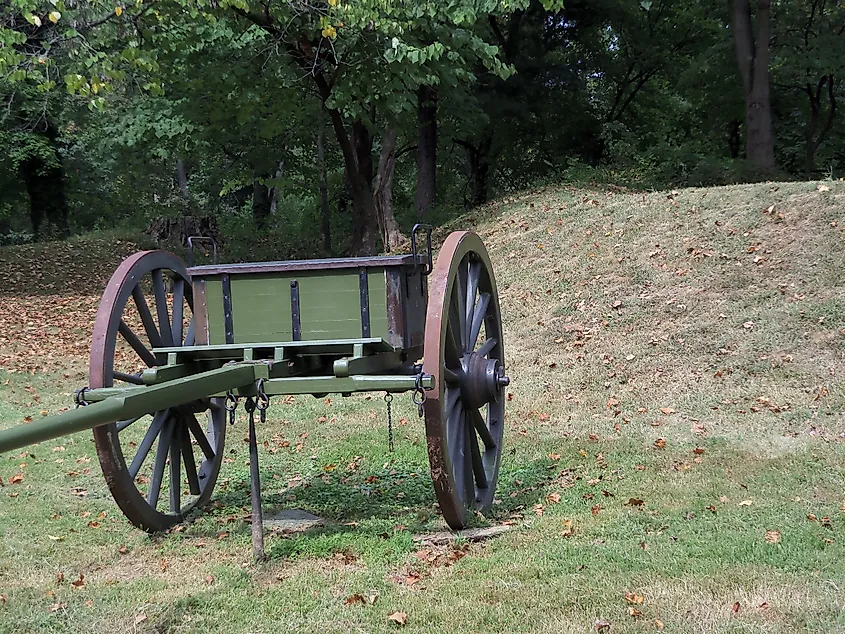
Fort C. F. Smith, constructed in 1863, was another part of the extensive ring of Union fortifications protecting Washington, D.C., during the Civil War. Built on elevated ground above the Potomac River and the Chesapeake & Ohio Canal, it provided artillery coverage between neighboring Fort Strong and Fort Bennett.
The fort’s design followed the standard earthwork style of the period, with parapets, ditches, and gun emplacements capable of holding nearly two dozen cannons. Although never directly engaged in battle, it served as a critical deterrent against Confederate offenses during the war. Today, the earthworks and surrounding parkland form the Fort C. F. Smith Park in Arlington, open year-round to visitors. Walking paths and educational signage trace the original fort layout, while the 20th-century Hendry House on the property serves as an elegant event and visitor space.
Fort Loudoun
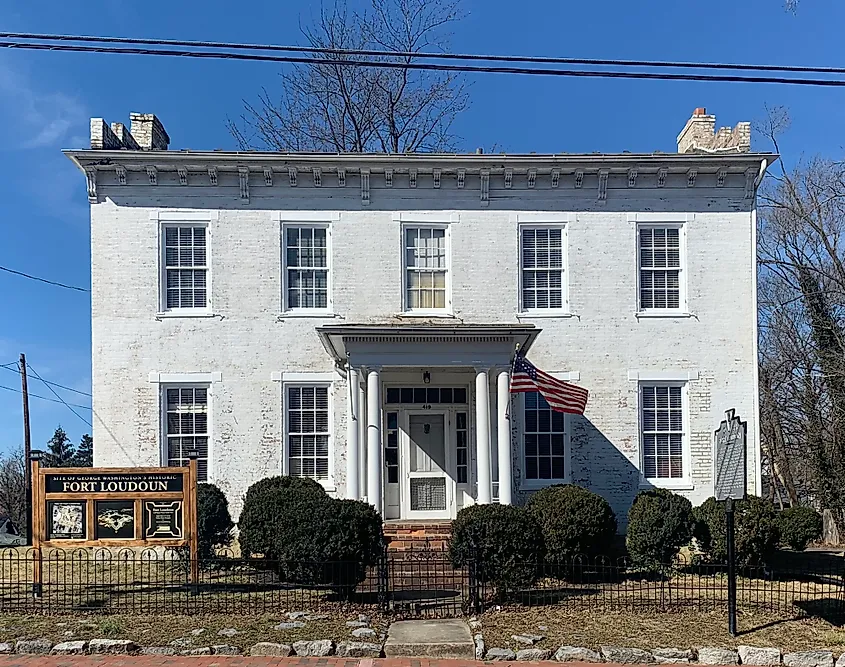
Fort Loudoun Historic Site in Winchester is another archaeological park and educational stop. Built in 1756 under the direction of Colonel George Washington during the French and Indian War, it was one of the first forts constructed to protect Virginia’s western frontier. The original structure was made of earth and timber, and it served as a command post for Washington while he led the Virginia Regiment.
Though the fort eventually fell into disuse after the war, its remains have been carefully studied and partially reconstructed. Visitors to the site can see outlines of the original fort walls and even a functioning well. Managed by the French and Indian War Foundation and the City of Winchester, the Fort Loudoun Historic Site provides a clear look into Washington’s early military career, as well as the kinds of frontier conflicts that shaped colonial Virginia.
Explore Virginia's Military Past at these Destinations
These forts in the Old Dominion State form a timeline of early American defense, documenting the region's involvement in major and minor conflicts from the 1700s onward. Visiting these sites allows for a grounded look at how warfare, strategy, and national priorities evolved over time in the budding days of the country. Whether standing on colonial earthworks or walking through Civil War ramparts, a stop at any of these destinations will help you gain a deeper understanding of Virginia’s central place in the military and political development of the United States.
